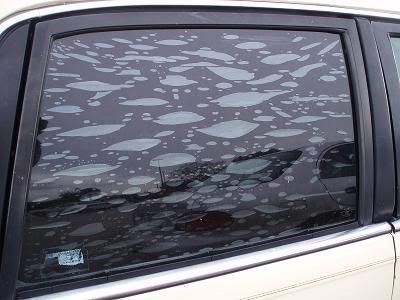There exists many tales in regards to automotive window tinting, and like any other tales, some are based on facts and others on fallacies. We shall be looking at the truths concerning window tinting as well as debunking myths surrounding it. One of the areas in which myths abound about window tinting is how long a window film will last. Several factors affect the durability of window film such as the weather conditions and climate the film is exposed to, the type of film used, the type of glass undergoing window tinting and how the windows, and thus in extension the film, are handled and maintained by the car owner.

For a car owner, there are many reasons as to why they should invest in window tinting. One of the reasons is to reduce solar heating of the car’s environment. Window tinting has been shown to decrease heating due to the sun by more than 80%, resulting in less energy being expended on cooling the car via air conditioning as well as making the car’s interior more comfortable for those in the car.
Window tinting also helps in blocking harmful ultra-violet rays from the sun, which are harmful to your health and cause fading of the car interior. Protection of the car’s interior from UV rays and heat results in the upholstery retaining the color and appeal for longer as well as being more durable since it is protected from fading and cracking.
Safety and security is also improved since window tinting reduces solar glare as well as glare resulting from reflection of strong light from nearby buildings, snow and water or from other car’s headlights. In case of an accident, window film also helps in holding together the glass prevent it from shattering, turning it into shrapnel that can seriously harm the car’s occupants. Security is improved since those outside the car cannot determine its occupants or contents, which goes a long way in improving the security and privacy of the occupants and keeping burglars away since they do not know what is in the car and they can’t easily determine whether their efforts are warranted or not.
Given that there are many types of window film one can use for window tinting, it is logical that they will have different lifespans too. Dyed films without UV inhibitors in the polyester tend to fade faster than films with UV inhibitors. Hybrid films with dye and metal deposits provide increased heat rejection with increased longevity.
However, the duration a window film lasts is determined by both the weather and its maintenance and handling. Whereas there is nothing much you can do about the weather or climate it is exposed to, proper care of window film goes a long way in ensuring that your window tinting film lasts longer. For example, window films have a scratch coat meant to protect the film from scratching since it is scratch-resistant. However, objects with sharp or hard corners and edges will still damage the film since it is not scratch-proof. Being careful when unbuckling a seat belt helps your window film last longer since the metal buckle of the belt sometimes hits the glass and damages the window film.
In conclusion, how long a window film lasts cannot be determined precisely but we can form a pretty accurate picture based on the type of film, handling and weather conditions.



















